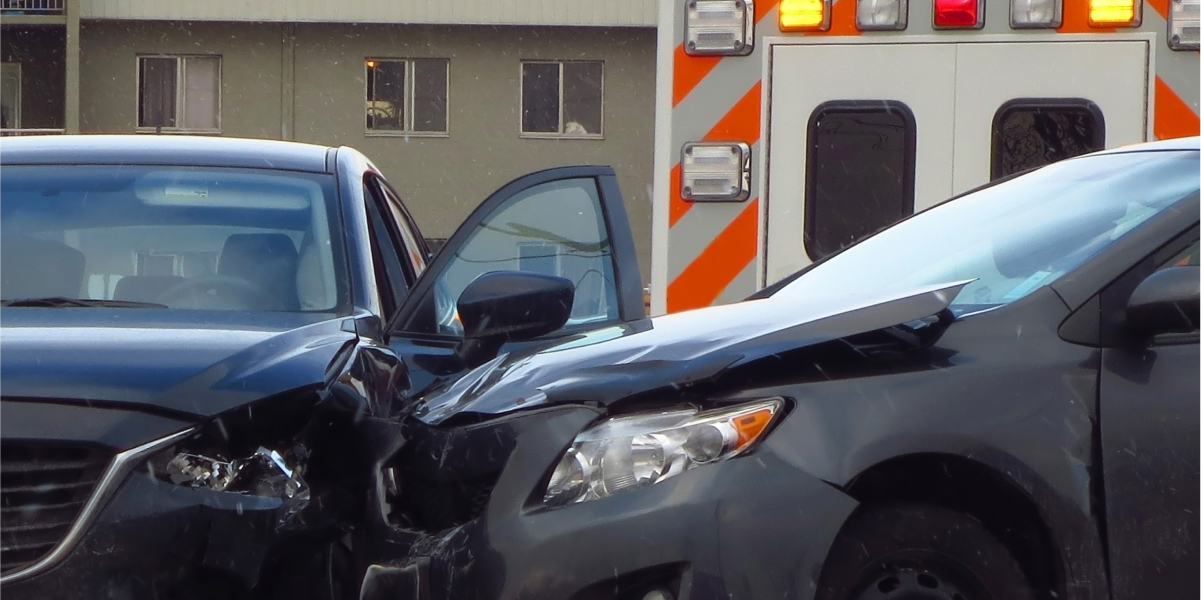Rear-end collisions are the single most common type of auto accident, with approximately 1.7 million rear-end car accidents happening each year. Rear-end car accidents typically cause severe injuries, such as head injuries, traumatic brain injuries, whiplash, back and neck injuries, and sometimes even death.
The National Highway Traffic Safety Administration (NHTSA) states that rear-end collisions are the most frequently occurring type of motor vehicle accident. Rear-end crashes account for around 29 percent of all motor vehicles accidents nationwide. The National Highway Traffic Safety Administration tasked the Virginia Tech Transportation Institute to conduct a series of tests and research on rear-end collisions.
Some of the study’s important findings were:
- Most rear-end collisions occur when the leading car is moving slowly or stopped. Around eighty-one percent of rear-end collisions happened when the lead motor vehicle was stopped. In most rear-end crashes, the driver was following the lead car too closely.
- Most rear-end collisions happened on dry, straight, level roads and during the day.
- In almost half of the rear-end collisions, the at-fault driver was hit by the lead vehicle due to driving while distracted or not paying attention.
- If the driver was eating, using a cell phone, daydreaming, or talking with a passenger, they were more likely to cause a rear-end collision.
- The study discovered that driver distraction accounted for around 90 percent of rear-end collisions.
- Male drivers ages 25 and 34 were 1.9 times more likely to be involved in a rear-end crash.
The Virginia Tech Transportation Institute’s research study also found that drivers need to leave more space between their car and the cars in front of them to avoid distracted driving. However, many drivers continue to give priority to their phones than roadway safety.
The Common Causes Of Rear-End Collisions
A rear-end collision happens when one vehicle’s front bumper strikes another vehicle’s rear bumper. Most rear-end collisions occur at speeds about 5 MPH and are a result of distracted driving. There are several reasons why rear-end collisions occur. The majority of rear-end collisions happen due to:
- Aggressive driving
- Distracted driving
- Drunk driving
- Faulty brake lights
- Poor weather conditions
- Tailgating
After a rear-end collision, injuries often include stiffness and soreness to the neck, shoulders, and back, which are indicators of soft tissue damage. One of the most common types of injuries caused by rear-end collisions is whiplash. Whiplash is a medical-legal term that describes the hyperextension of the injured person’s neck, spine, nerves, and ligaments. Whiplash is a common injury in rear-end collisions due to the crash forces that occur when the car is pushed forward while the passengers in the car remain at rest. Rear-end collisions are the chief cause of whiplash injuries and can lead to brain trauma.
Whiplash injuries can present themselves in many forms and often vary depending on the person experiencing the injuries. However, whiplash injuries from a rear-end car accident are typically characterized by neck pain and stiffness, consistent headaches, and pain in the shoulder blades or upper shoulders. Additional whiplash symptoms might also include lower back pain, numbness in the arms, and/or blurred vision. These symptoms are very serious, and if you or a loved one is suffering from whiplash symptoms following a rear-end collision, you should seek medical attention immediately.
How to Recover Damages in Rear-End Collisions
When determining which driver is at fault in a rear-end collision, the answer in most cases is the “approaching” vehicle.” However, some states utilize a presumptive law that places fault on the rear driver. In most cases, the driver who caused the accident was either following too closely or was driving distracted. These crashes typically happen when distractions prevent the driver from reacting to the motor vehicle in front of them in time.
Situations When the Lead Driver May Be At Fault For the Accident
Under some circumstances, it is possible to argue that the lead vehicle was partially at fault for causing a rear-end accident. According to a National Highway Traffic Safety Administration study, these incidents are rare, but when they occur, it is due to the lead driver’s:
- Merging in front of a vehicle without enough space.
- Erratic driving due to intoxication.
- Backing into the rear vehicle.
Whether or not the lead vehicle driver is at fault for the accident could depend upon the distance of the approaching vehicle or the driver’s speed. For example, if the rear driver was following the lead car at a safe speed but didn’t have the space or time to stop, that driver could be partially liable.
Rear-end Accident Injuries
The effects of getting rear-ended can vary from mild to intense. Data from the Insurance Information Institute (III) reports that rear-end collisions accounted for 7.2% of all accident-related fatalities.
In many rear-end accidents, there is minimal damage, and the drivers might be able to work things out. Aside from physical injuries, rear-end collisions can cause various levels of damage to the cars involved. This can range from broken taillights to caved-in trunks. The most severe accidents may even involve multi-car pileups and totaled vehicles.
How to Hold At-Fault Driver Accountable
If you or a member of your family has suffered injuries in a recent rear-end collision and the other driver is at fault, you could file a claim to recover monetary compensation. Your case must provide evidence that proves negligence on behalf of the other driver.
Evidence that you may need to prove the other driver’s guilt may include:
- Eyewitness testimony
- Traffic camera footage
- Medical records
- Damage reports on the vehicles
- Police accident reports.
We Help People Who Have Been Injured or Lost Loved Ones in Any Type of Motor Vehicle Accident Caused By Another
If you or a member of your family has been harmed a car accident, contact Montlick Injury Attorneys as soon as possible. The time to file an accident claim is limited by state law. Our experienced accident attorneys will fight for the financial compensation your potential case deserves. No matter where you are located, our attorneys are just a phone call away.
We Know What It Takes To Win!®
If you have been injured or lost a family member due to an accident, contact Montlick Injury Attorneys, for your free consultation today. Our law firm has been representing those who suffer serious injuries or lost a loved one in an accident for over 39 years. Our trial attorneys have recovered billions of dollars for our personal injury clients through negotiated settlements, litigation/lawsuits, settlement of lawsuits, jury verdicts, mediation, and arbitration awards.
Please visit our read Montlick Injury Attorneys reviews to see what our clients have to say about our commitment to exceptional service.
No matter where you are located, our attorneys are just a phone call away, and we will even come to you. Call us nationwide 24 hours day/7 days a week for your Free Consultation at 1-800-LAW-NEED® (1-800-529-6333), or simply dial #WIN® (#946) from your mobile phone. You can also visit us online at Montlick.com and use our Free Case Evaluation Form or Free 24-hour live chat.
—
Montlick Injury Attorneys, Attorneys at Law
Address: 17 Executive Park Dr NE
Atlanta, GA 30329, United States
Hours: Open 24 hours
Phone: (404) 529-6333
Toll Free: (800) 529-6333
RMH6+38 Atlanta, Georgia, USA
Rear-end Collision Lawyers in Georgia
Sources:
https://www.ntsb.gov/safety/safety-studies/Documents/SIR1501.pdf
https://driving-tests.org/driving-statistics/


